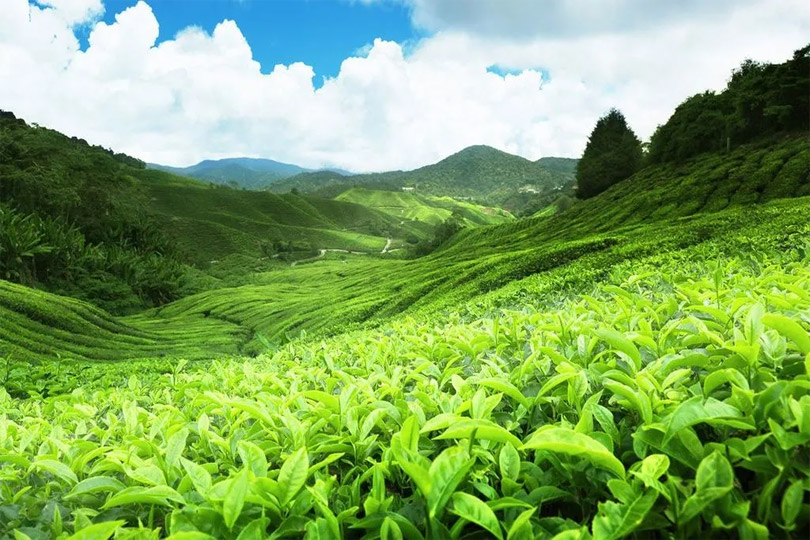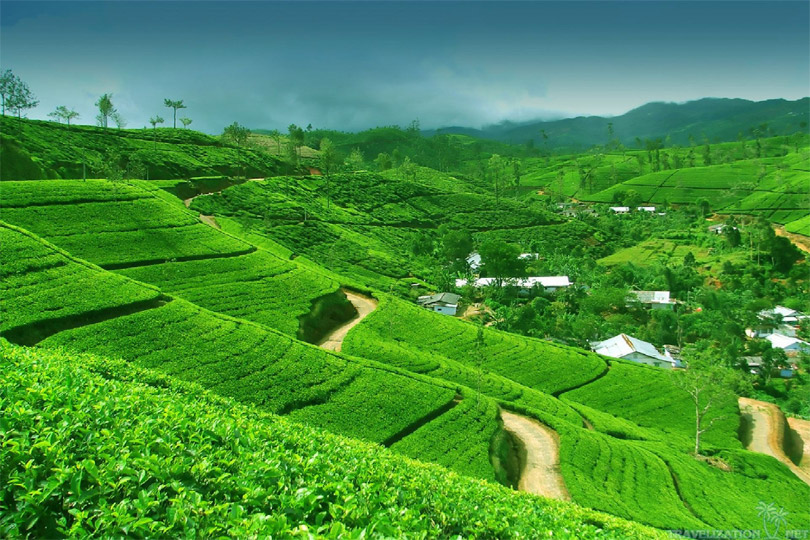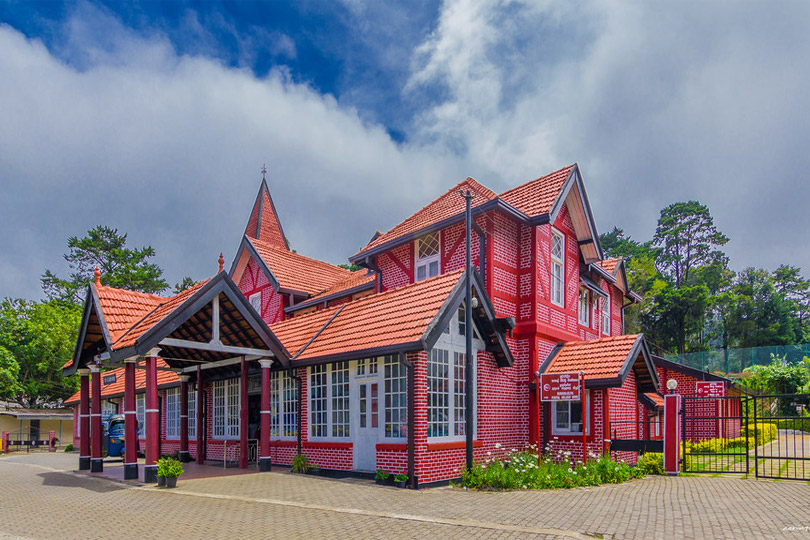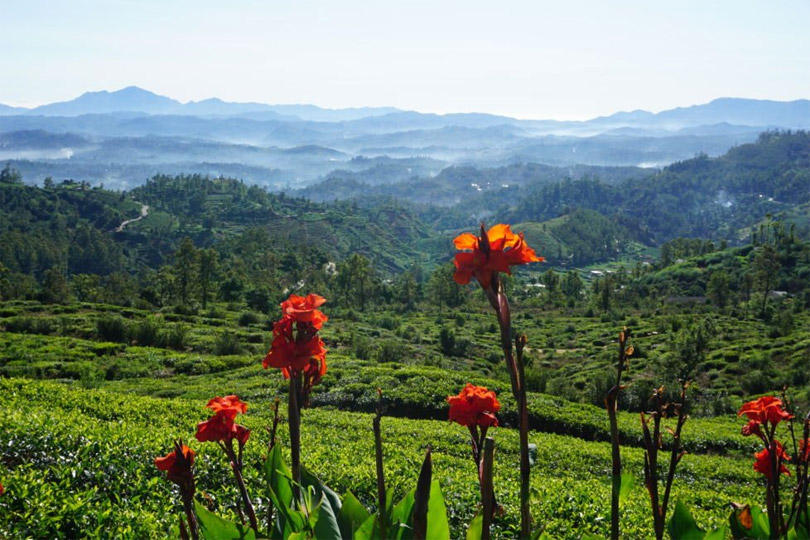
Nuwara Eliya
The modern history of Nuwara Eliya begins in 1818 when a British Surgeon, Dr. John Davy (Brother of Humphery Davy, the inventor of the Miners’ Safety Lamp), rediscovered this area. It is said that Dr Davy expressed;
I was walking in the middle of a forest. I saw a beautiful white shining diamond watered waterfalls falling. I came to the top of a mountain. The people who came with me said that it is the highest land of this country
Dr. John Davy mentioned that this place - Nuwara Eliya - has so many 'Ashoka' trees, Elephants, Wild animals and Gem stones.

Today, known as 'Oliphant Estate', is the old 'Elephant Plane', the place where so many Elephants lived. Even today there are graves of 02 Elephant killers at the Golf Ground of Nuwara Eliya. One is written as 'Ibenishan Gordon Mendrow, Birth-1814.11.10 and Death-1841.01.24 - Died in the Elephant Plane'. The other one is written as 'Major William Thomas Rojerson, Death-1814.06.07. It is said that Major William Thomas Rojerson had killed more than 400 Elephants. The very much believed truth is; once in 07 years this grave is attacked by thunder shocks. Even today you can see the cracked grave closer to the Golf Ground of Nuwara Eliya. People believe that it is the curse of God to the Elephant killer!

The story goes like this... Few British troops had chased an Elephant and they had got lost in the forest. Without food and other basic needs they thought it will be much harder to spend the day and night in that forest. But the cool climate and fresh air of that place kept them very fresh without any pain. They thought that this was a good place to rest after fighting in the war and once they have returned to their place they had informed the Governor, Sir Edward Barnes, immediately about this place.
Sir Edward Barnes was the Governor from 1824-1831. He had constructed roads and shelters in Nuwara Eliya. He had built his holiday home in Nuwara Eliya spending 8000 Pounds. He had named it as "Barnes Hall". Today this place is known as the famous Grand Hotel of Nuwara Eliya with more than 150 rooms. St. Andrews Hotel, Keena Hotel and Carlton Hotel are some of the other constructions. The District Secretary, Mr. Loku Banda, has helped Sir Barnes to build these holiday homes.
It is Sir Edward Barnes who had made Nuwara Eliya a place to live for the people and he is known as the "Father of Nuwara Eliya".

After Sir Barnes, Sir William Horton had become the Governor from 1831-1837. He was the editor of the 'Colombo Journal' newspaper. He had written so many articles about Nuwara Eliya in his newspaper.
In this period Mr. Samuel had arrived from England to Nuwara Eliya. He had planned to build a house at Magasthota and to have a huge vegetable and animal farm. He went to England and came back in 1848 on 'Pearl of Hard Week' ship through the sea path. He had brought plants, animals, other equipment and goods with him. His brothers John and Valentine have also come with him. He had also brought with him some expert people in the field of farming.
Mr. Samuel and others had faced great difficulty in transporting the goods and animals to Nuwara Eliya. They had brought the goods in bullock carts from Colombo. At a difficult point near Ramboda Pass the bullock carts had fallen down the steep slope the brothers' of Mr. Samuel had died. Hence, from Ramboda Mr. Samuel had hired some laborers and finally brought the goods to Nuwara Eliya. Subsequently Mr. Samuel had made an Agricultural village and named it as 'Baker's Farm". The land cost him only 25 Shillings per acre. Even today there is a 'stone letter' left in the Bakers farm of Nuwara Eliya.
Mr. Samuel Baker also had made a hospital ward at the Base Hospital of Nuwara Eliya in memory of his Late brothers. Even today the 'Baker's Ward' is there in the Base Hospital of Nuwara Eliya, situated at Hawa Eliya.

Mr. Baker brewed his own beer and tried to grow grapes, oats barley and wheat, which normally grows in low temperatures. However, his experiment was a failure. He closed down his farm in 1866 and went back to England. Sri Lanka’s broadest waterfall, Bakers Falls in the Horton Plains National Park, is named after Mr. Samuel Baker.
Sir William Gregory had become the Governor in 1872 (1872-1877). He had the vision of making Nuwara Eliya as the Capital city of Sri Lanka. He had so many proposals to develop Nuwara Eliya. Governor William Gregory drained a swamp and converted it into a lake, which is today a prime attraction in the city, known as 'Gregory Lake'. He had given the message to the world about the beautiful city of Nuwara Eliya, famous for its luxurious and cool climate, fertile land suitable for cultivation with crops such as Coffee, Tea, 'Cinkona' and also suitable for animal farming and Gem mining.
As a result of Governor William Gregory's announcement, a large number of foreign merchants had begun to visit Nuwara Eliya. since then the population of the city had increased.
Sir Robert London had become the Governor from 1877-1884. According to Sir William Gregory's advise, he had constructed a railway track from Peradeniya to Nawalapitya and from there to Hatton and Nanu Oya.
By 1910 only 2 Sri Lankans owned houses in Nuwara Eliya, Maha Mudali Sir Soloman Dias Bandaranaike (father of S.W.R.D.Bandaranayake - later Prime Minister of Sri Lanka) and F.C.Loos.
After the end of World War I in 1918, more Sri Lankans bought land and built houses here. Some of them were Sir Ponnambalam Arunachalam and E.L.F.De Soyza. While Samuel Baker paid about Rs.25/- per acre Sir Ponnambalam paid Rs.10,000/- for ½ an acre!
Some other point to note:
- The British civil servants, high government officials and businessman, who came here during April, when it was hot and balmy in the low country and the plains introduced Trout fishing to the streams in Horton Plains and Nuwara Eliya.
- Governor West Ridgeway suggested that all roofs be painted red and till recently many followed this practice.

- Many houses were built in the architectural style of the Tudor houses in England. The Nuwara Eliya Post Office is one of the oldest such houses. Some houses had fireplaces.
- 'Thawalanthenna' (small city along the Nuwara Eliya - Peradeniya main road) is the place that had been used by the travelers to rest with their bullock carts in the historical days.
- 'Kelegalle' and 'Kalukelle' (villages 1.5Km away from the Nuwara Eliya town) were used as resting places for bulls, which were used for transporting goods from Nuwara Eliya to other parts of the country.
